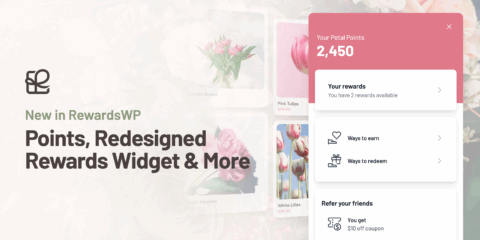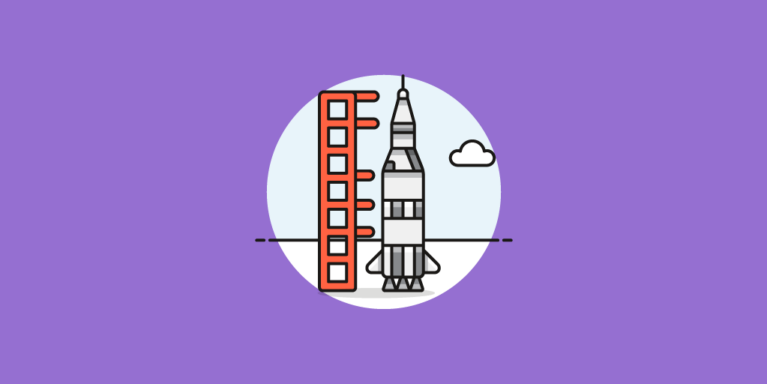
New in RewardsWP: Points, Redesigned Rewards Widget & More
RewardsWP now includes Points, a redesigned Rewards Widget, and new tools to launch, run, and measure loyalty and referrals in one place.
Continue Reading →
RewardsWP now includes Points, a redesigned Rewards Widget, and new tools to launch, run, and measure loyalty and referrals in one place.
Continue Reading →
Your online store is already a well-oiled machine with awesome products, but you want to boost your traffic and increase your revenue without breaking the bank on risky advertising.
Affiliate marketing is not a new concept; “brick and mortar” store owners and traditional service providers have been engaging in what’s known as revenue sharing since long before the internet existed. First adopted by internet businesses in the 1990s, this type of win-win practice is now considered one of the most effective ways to reach your target audience and invigorate your online sales.
The concept is pretty simple: bloggers, YouTubers, and other online businesses (all known as affiliates) promote your products and bring extra traffic to your site with tracking links that are unique to them. When someone buys your product using the link, the affiliate receives a commission on the sale. If done correctly, your affiliate program can bring high-quality traffic – and most importantly, pre-qualified buyers – to your site.
Think you’re ready to enter the affiliate marketing game? The most important thing is to plan ahead and be prepared, so let’s take a look at some tips to keep in mind as you gear up your program for launch.
Let’s talk about the fundamentals first. You get to decide how you want to structure your program, who’s involved, and how it all works – after all, you’re the merchant, and the captain of the ship. Here are some key factors that will help you solidify your plan and proceed with confidence:
What are the terms and conditions?
This is the fundamental agreement between you and your affiliates, describing what is expected of them, what methods they are (and are not) allowed to use when promoting your products, and what they can expect in return for their efforts. You’ll want to be as clear and concise as possible, using language that is easy to understand and difficult to misinterpret.
Is a flat rate or sales percentage more appropriate for your store?
Depending on the type of products you’re selling, you might decide that a flat rate commission per lead makes more sense. This is known as pay per lead or cost per action (CPA), and can be beneficial if your goal is to build a mailing list, collect lead information, etc. More commonly, you might decide to go with a sales percentage, which means that you only pay on performance, as opposed to leads, and makes the incentive stronger for your affiliates to convert sales.
What commission or referral amount will you offer?
If you decide on a sales commission percentage, you’ll want to do some research to figure out what rate is going to makes sense for your program. How much are you willing to part with for each successful purchase? This can be a difficult decision, so you’ll want to consider the following:
Keep in mind that the lowest rates aren’t necessarily the most beneficial. Giving your affiliates higher rates can incentivize them to work harder, and stay loyal to your program – in the end, it can make a significant difference in your sales. If you decide on a flat commission amount, and it applies to all products, be sure to check it doesn’t impact your profit on a sale.
The platform you use to manage your affiliate program is entirely based on your personal preference, goals, and needs – but with many options available to choose from, you might have a hard time settling on one.
The basic functionality of an affiliate platform is to calculate commissions, track referrals, manage affiliates, and provide analytics on affiliate performance, all from one central place. There are some other features to look out for as well, such as a dedicated affiliate dashboard, easy management of promotional resources (like creatives, banners, product information), and full integration with other eCommerce plugins. You want to choose the platform that not only has the features you are looking for, but also has the best reach in your industry and location (if applicable).
Each affiliate platform has its features and benefits, so take some time with your research, and choose a system with the functionality that you require for your particular needs. Consider the following things before choosing a platform to try:
Identifying the people in your industry niche that work with your target (or related) audience is essential to your program’s success. These people are not just the most obvious choices; they also have a much higher chance of taking a personal interest in your products, and therefore tend to produce the highest conversion rates.
It’s up to you whether you need more affiliates, or fewer quality affiliates – either way, focusing on your industry niche is going to produce better results. Being picky with your “starting team” can help to keep spam at bay, ensure that you have the right people working for you, and create momentum for your affiliate program.
This goes hand-in-hand with knowing your affiliates, and starts with a few simple questions: What are you going to promote? Do you want to promote everything in your store? One product in particular? A certain line of products? What you decide to promote affects all of the other decisions you make about your program, from the affiliates you choose, the promotional materials you use, as well as the structure and methods you employ.
If you decide to promote certain products and not others, think about which of your products are most relevant to your chosen affiliates. There’s nothing more appealing to a good affiliate than a product they’re naturally interested in, giving them a sense of authenticity and ownership – and the extra incentive to do a great job promoting it.
Creatives are the promotional assets (banners, for example) that your affiliates use to promote your products. This can be graphics of different sizes that correspond to standard social media sizes, or text links that are easy for affiliates to copy into posts and newsletters. Rather than requiring them to make their own materials, you can jump start the process (and retain control over how your brand is presented) by creating an organized library of ready-to-go creatives that allow them to get right into promoting without delay.
If you decide to let your affiliates make their own creatives, be sure to have all of your branding assets readily available. This may include your logo, slogans, product descriptions, product photos, fonts, and specific brand colors (hex codes or reference images). You can choose to create a brand assets page to make it extra simple for your affiliates to have constant access to what they need. The idea is that even if you aren’t in complete control, there will at least be continuity amongst the promotional materials being shared.
This is one of the most important parts of your affiliate program. Cookies are used to track traffic coming from your affiliate links, so that if the referred customers make a purchase, it’s credited to the correct affiliate. Many programs use 30-day cookies, which track (and credit) referred traffic for up to 30 days. Some programs offer cookies that last for up to 90 days (or even a year, in certain instances) to maintain a competitive edge, while other companies (like Amazon) use very short cookies (24 hours).
You’ll want to choose a cookie duration that makes the most sense for your affiliates and your business, taking into consideration the type of product in particular. Is the product an impulse buy? Is it an expensive product with a longer sales cycle? These factors will affect what type of cookie you decide to use, and what will be most effective.
Once you have everything set up, it’s time to launch! Just don’t forget – your work isn’t done when your affiliate program goes live. This is the crucial time to recruit your affiliates and promote like crazy, and your existing customers are a good place to start. You might send out a newsletter offering introductory commission rates and special incentives specifically for your loyal customers.
If you need an extra hand with recruiting affiliates, there are networks available you can tap into, like AffiliateRanker, AssociatePrograms, and AffiliateScout. You can participate in affiliate forums, as well as social media groups and pages to increase your visibility and build your niche authority. Remember: the more active you are in your relevant community and industry, the more reach you will have, and the more likely you are to pique the interest of people who are well-suited for your program.
In terms of social media, affiliate marketing has never been bigger. With thousands of influencers and brand ambassadors on Instagram, Facebook, and the like, if you do a little research, you are sure to find the right people. Relevant hashtags and competitor accounts can be valuable resources just waiting to be mined!
Launching your own affiliate program can put all the pressure on you, but staying organized, proactive, and persistent pays off. Don’t worry if your program doesn’t snowball immediately; sometimes it can take time to pick up steam, so be patient and keep the faith! Stay alert and observant, and be willing to make adjustments as necessary to make things work for you and your affiliates.
What have you learned from launching your own affiliate program? What advice would you give to someone who is almost ready to launch their brand new affiliate program? Share your thoughts in the comments!
Disclosure: Our content is reader-supported. This means if you click on some of our links, then we may earn a commission. We only recommend products that we believe will add value to our readers.
Launch your affiliate program today and unlock a new revenue channel to grow your business faster.
We use cookies to improve your experience on our site. By using our site, you consent to cookies.
Manage your cookie preferences below:
Essential cookies enable basic functions and are necessary for the proper function of the website.
Statistics cookies collect information anonymously. This information helps us understand how visitors use our website.
Marketing cookies are used to follow visitors to websites. The intention is to show ads that are relevant and engaging to the individual user.
I cancelled my subscription some time ago and you are still attempting to charge me. HOW DO I STOP THIS!?
Why comment here? Because I don’t have time to search every nook and cranny of your website to find a contact form or support of any type other than a search index that says “We’re here to help you” when you are clearly not.
Hi Doug!
Sorry to hear it was challenging to find dhow to contact us to cancel your subscription. You can do that at anytime from your account page here: https://affiliatewp.com – You can also contact our support team at any time from https://affiliatewp.com/support
I’ll make sure the support team processes your request to get a refund processed for you.
Best regards
It’s not a matter of not finding out how to contact you to cancel my subscription…I DID that through the account as you suggested days ago… yet it is still trying to renew the subscription.